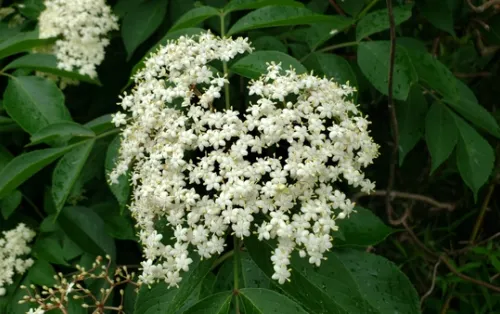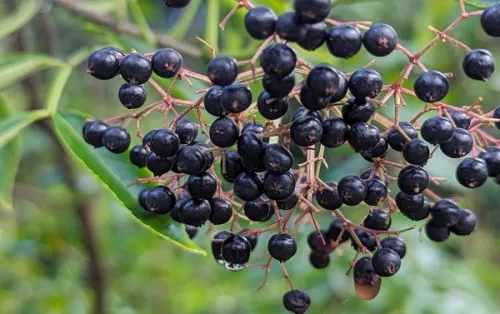Back to Glossary
American Black Elderberry
Sambucus canadensis
American Black Elderberry, also called Common Elderberry, is a versatile and fast-growing shrub that can reach heights of 5 to 12 feet. In early summer, it produces large, flat-topped clusters of tiny white flowers that are fragrant and attractive to pollinators. These flowers mature into rich, dark purple berries by late summer, which are a favorite of birds and can be harvested for making syrups, jams, and wines. The berries are also noted for their high vitamin C content and immune-boosting properties. American Black Elderberry thrives in full sun to partial shade and prefers moist, well-drained soil, making it ideal for naturalized areas, wildlife gardens, and as an informal hedge.
Details
Height72” - 120”
Spread84"
Bloom SeasonMay – July
Soil Types
Clay
Loam
Sand
Soil Moisture
Medium
Moist
Sun Exposure
Part Sun
Full Sun
Range Map
Available
Not available
Ecological Benefits
Maintenance Tips
- Requires regular watering, especially in dry conditions, to support its rapid growth.
- Prune in late winter to early spring to remove dead or damaged branches and to shape the plant.
- Prefers fertile, humus-rich soil but is adaptable to a range of soil conditions.
- Apply a layer of organic mulch to conserve moisture and suppress weeds.
- Monitor for pests like aphids and diseases such as powdery mildew, managing as necessary.
- Flowers are self-fertile so even a single plant will produce fruit.
- The plant's edible berries can usually be harvested for consumption sometime between mid-August and mid-September.





